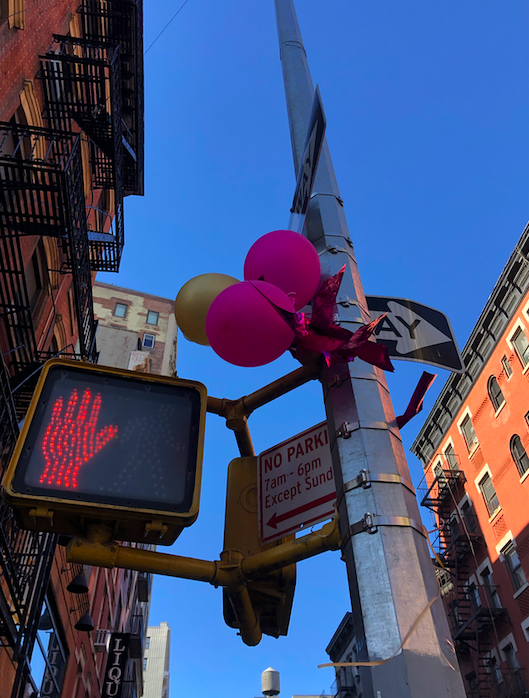Walking is the Most Underestimated Form of Exercise
Photo taken by author
We’ve all seen them.
Those that suit up for their workout with neon sweat bands stretched and snapped onto their forehead, equipped with bright leggings and foamy sneakers. Weights adorn this person’s limbs to complete the look; velcro holding on tight as their arms and legs pump vigorously and propel this athlete forward.
I used to giggle silently when they sped by but these power-walkers might have something figured out.
We praise ourselves and others when we see a tomato-red face dripping with sweat, so tired that going up a few steps the next day might be difficult. Is a more physically demanding workout “better” for you? The truth is, it depends on who’s asking.
John Ford, certified exercise physiologist, who runs JKF Fitness & Health in New York City, asserts that “Running, due to larger muscle recruitment…will always have the proverbial leg up on walking. With that being said, walking is a really good form of exercise and can help you reach your fitness and weight-loss goals…In fact, walking is the suggested workout over running for many people. For example, those with knee, ankle and back problems and also for people who are overweight to obese. Walking is a lower impact exercise and can be done for longer periods of time.”
“There are many reasons to walk for exercise,” agrees Ann Green, M.S., retired heptathlon world athlete, yoga teacher, and fitness studio owner. “Walking improves fitness, cardiac health, alleviates depression and fatigue, improves mood, creates less stress on joints and reduces pain, can prevent weight gain, reduce risk for cancer and chronic disease, improve endurance, circulation, and posture.”
In a study performed by National Runners’ Health Study with the National Walkers’ Health Study over a six-year period, they found that energy used for moderate-intensity walking and vigorous-intensity running resulted in similar reductions in risk for high blood pressure, high cholesterol, diabetes, and heart disease. Meaning that if one expends the same amount of energy/calories on a walk as they would have with a jog (one would have to walk slightly longer in order to do this), then they would be able to keep in check some of the most important markers of our health.
Previous studies have supported these findings. A daily walk can reduce the risk of stroke in both men and women, reduce the days spent in a hospital each year, and can even lower your risk of death by up to 39 percent when compared with a predominantly sedentary lifestyle.
Not only is there a plethora of evidence to suggest that walking regularly can reap many benefits physically, studies have also demonstrated the multitude of mental advantages. In a Stanford University study, students found that walking increased creative output by an average of 60 percent. According to the research, “walking opens up the free flow of ideas, and it is a simple and robust solution to the goals of increasing creativity and increasing physical activity.”
Walking has also proved to be an effective mood-booster. In a study by PubMed, researchers found that just twelve minutes of walking resulted in an “increase in joviality, vigor, attentiveness and self-confidence versus the same time spent sitting.” Walking in nature, was found to reduce the amount of time spent dwelling on negative experiences, decreasing the risk of depression.
Walking has also been shown to improve memory and prevent the deterioration of brain tissue as we age. Additionally, psychologists studying how exercise relieves anxiety and depression also suggest that a 10-minute walk may be just as good as a 45-minute workout when it comes to relieving the symptoms of anxiety and boosting mood.
During the pandemic, it can be especially hard to find the motivation buried beneath the snacks or numbed by the constant glow of a screen. This is made even harder when our expectation for what a “good” workout constitutes requires us to overly exert ourselves. Our expectations make even the prospect of working out extremely difficult to approach. If we were to shift our mindsets and tell ourselves that we’re just going to go out for a light walk in the park across the road, we would burden ourselves with less pressure and guilt.
So suit up with those overly-cushioned sneakers. Wear those neon sweatbands proudly. Pump those arms like nobody’s watching because you’ve figured out how to take that first step.
Sources:
https://www.consumerreports.org/exercise-fitness/benefits-of-walking/
https://www.nbcnews.com/better/health/why-walking-most-underrated-form-exercise-ncna797271
https://www.healthline.com/health/benefits-of-walking#how-to
